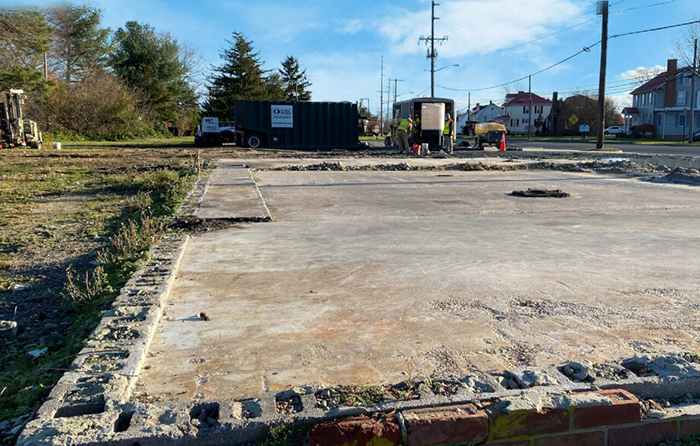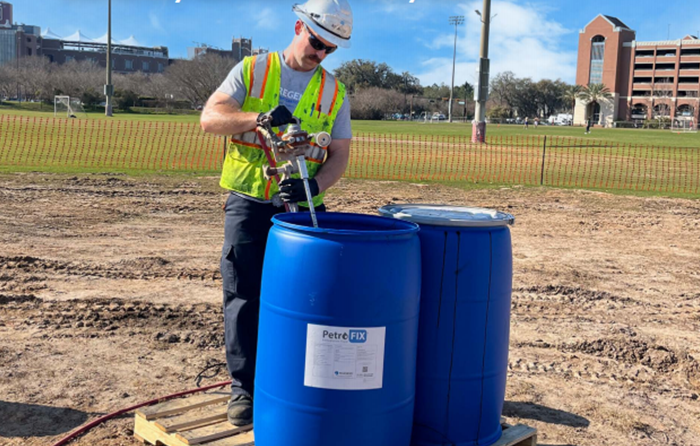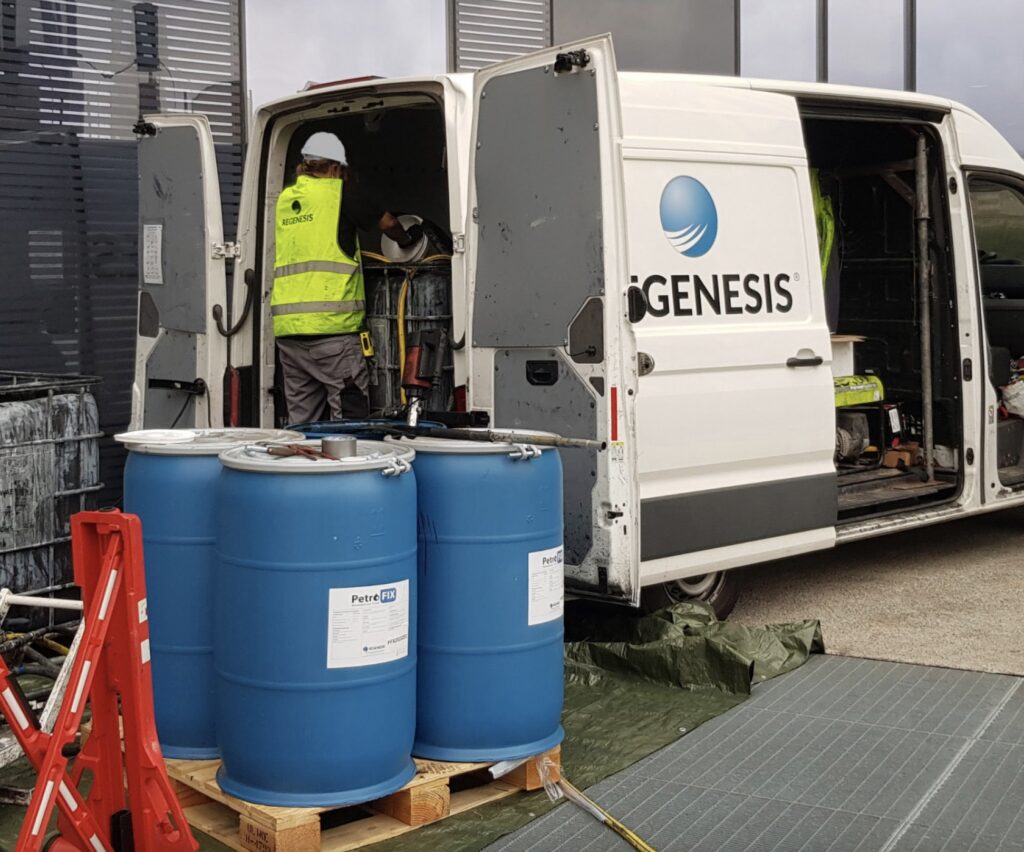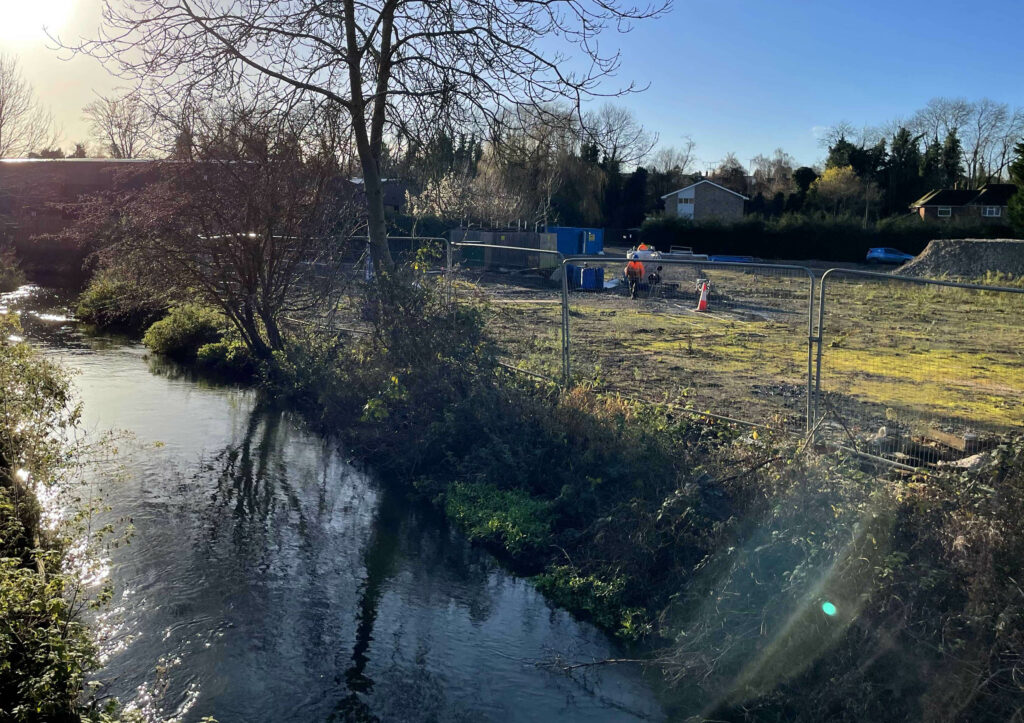High-Mass Petroleum Hydrocarbons Treated to Achieve Closure
Case Study Highlights:
-
PersulfOx injected into subsurface during 3 treatment rounds, sequenced ±2 months apart
-
Toluene reduced by an average of 94% and below the toluene Site-Specific Target Levels (SSTLs) in all 5 performance monitoring wells
-
Toluene remains below its SSTL following the injection of PersulfOx

A former US electric service company reported a release during a UST removal completed at the site in 1988. Previous remediation by others included aggressive fluid vapour recovery events completed from 2004 to 2008 and from 2019 to 2020 to address the release, along with groundwater monitoring. Despite these efforts, high concentrations of petroleum hydrocarbons (PHC) remained. Following years of remediation, the final selection and successful application of PersulfOx® effectively reduced high concentrations of toluene in groundwater below the site cleanup goal. The remediation achieved the site target cleanup objectives and received regulatory closure for the decades-old release incident.
Rapid Hydrocarbon Remediation at an Industrial Site in Northern Italy
PetroFix minimizes site disruption, allowing redevelopment to go ahead
A vacant industrial site in an urban area in Northern Italy, contaminated by petroleum hydrocarbons and BTEX from underground storage tanks, was effectively remediated using PetroFix colloidal activated carbon technology.
-
The project required substantial and rapid contaminant reductions to allow for planned site redevelopment.
-
Studio Planeta selected PetroFix® as the most appropriate and least disruptive technology, due to the urban site setting, time-scales for redevelopment and economic factors.
-
Achieved concentrations below stringent regulatory levels within weeks, with reductions observed in both treated and surrounding areas.
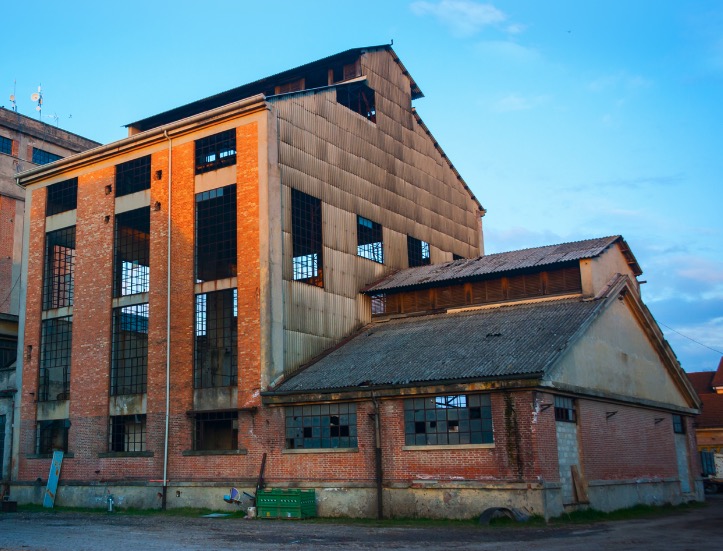
A vacant industrial site in an urban area in Northern Italy, contaminated by total petroleum hydrocarbons (TPH) from underground storage tanks, was effectively remediated using PetroFix colloidal activated carbon technology. The project required substantial and rapid reductions of TPH to allow for planned site redevelopment. Following the application, significant contamination reduction was achieved within months, meeting stringent regulatory standards. These results highlight the utility of PetroFix in complex, urban environments requiring rapid and non-disruptive remediation solutions.
PetroFix Achieves Success at Delaware Service Station
Case Study Highlights:
-
Site closure targets rapidly met through innovative remediation
-
Strategic application of PetroFix® through both grid and barrier injections as well as the direct application of RegenOx® during excavation of highly impacted soils
-
Achieved reductions in benzene, toluene, and EDB to near or below detection limits
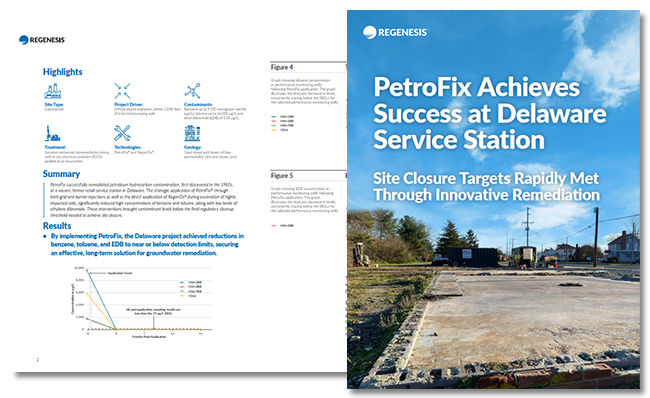
At a vacant, former retail service station in Delaware, the strategic application of PetroFix through both grid and barrier configuration injections, as well as the direct application of RegenOx during excavation of highly impacted soils, significantly reduced high concentrations of benzene and toluene, along with low levels of ethylene dibromide. These interventions brought contaminant levels below the final regulatory cleanup threshold needed to achieve site closure. By implementing PetroFix, the Delaware project achieved reductions in benzene, toluene, and EDB to near or below detection limits, securing an effective, long-term solution for groundwater remediation.
Stringent Site Closure Goals Achieved Using PetroFix
Case Study Highlights:
-
Petroleum impacts effectively remediated at university recreation facility site
-
Project goals met in all treatment areas, within budget and time constraints
-
Low-impact, single injection event minimized disturbance to athletic fields
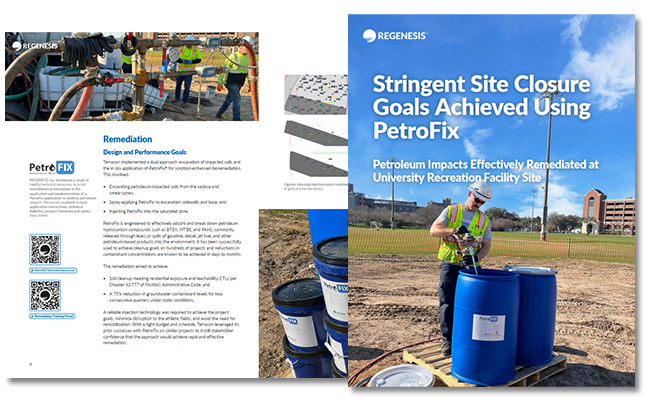
Terracon, a leading US environmental engineering and consulting firm, completed the remediation of a university recreational facility in Florida impacted by historic petroleum hydrocarbon (PHC) contamination. Under stringent contractual timelines and performance benchmarks set by the Florida Department of Environmental Protection (FDEP), Terracon excavated PHC-impacted soils and applied PetroFix® in situ to address residual contamination in the saturated zone. The injection area needed to be restored to its original condition to accommodate upcoming seasonal use. A reliable injection technology was required to achieve the project goals, minimize disruption to the athletic fields, and avoid the need for remobilization. This comprehensive approach successfully met FDEP’s cleanup goals for soil and groundwater where the amendment was applied in the treatment area.
PetroFix Eliminates Hydrocarbon Plume Migration
Permeable reactive barrier installed in underground car park in Northern Italy
This case study explains the installation of a PetroFix permeable reactive barrier below a new office building in Northern Italy.
-
The barrier has stopped the offsite migration of a petroleum hydrocarbon plume onto a public road and archeological site.
-
The in situ remediation has met the stringent cleanup target, positioning the site for regulatory closure, despite the challenges posed by the restricted access onsite.
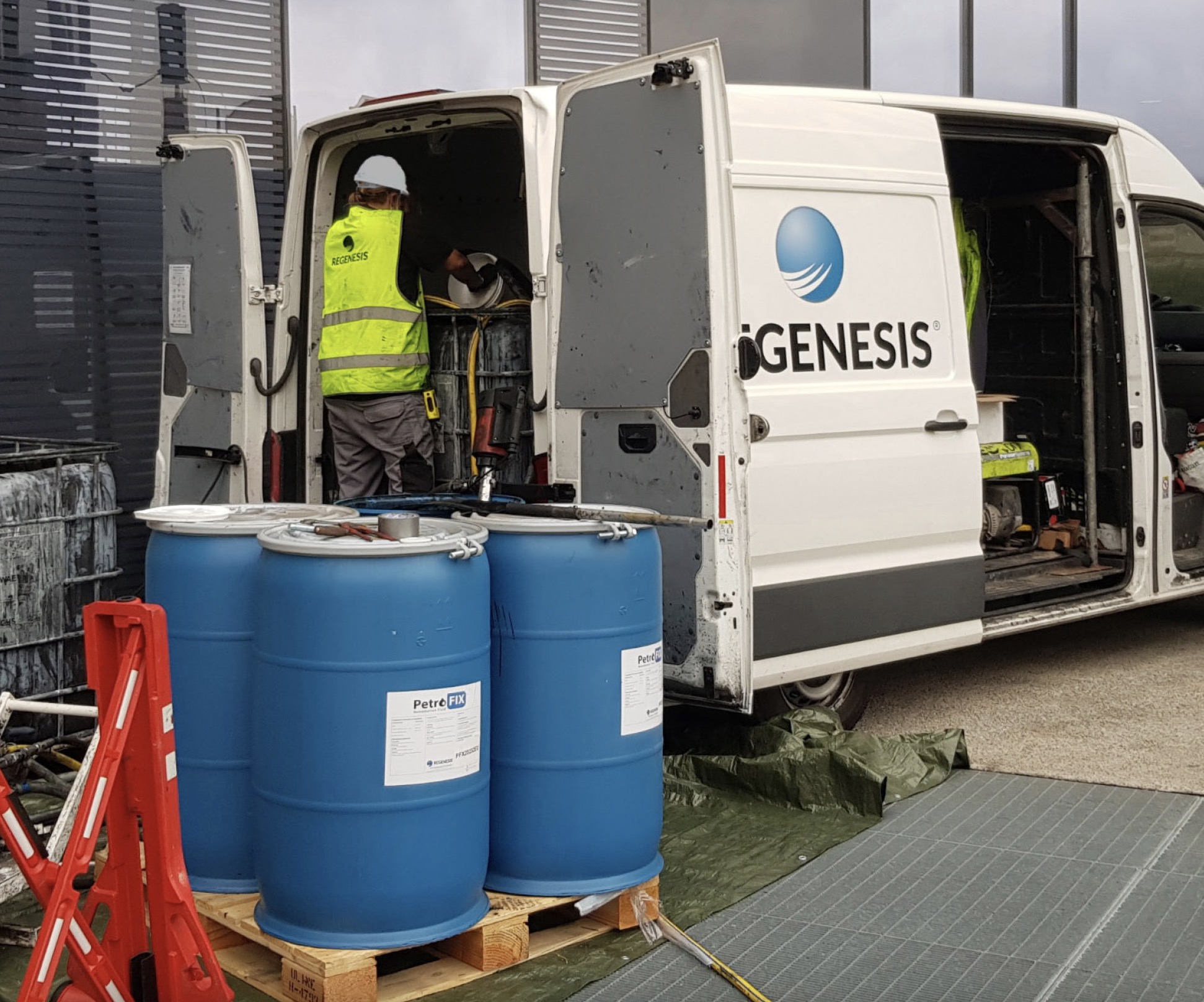
Protection of a chalk stream using an injected permeable reactive barrier
Integrated remediation of petroleum hydrocarbons in soils and groundwater
At a brownfield redevelopment site in Hertfordshire, UK, petroleum hydrocarbon contamination originating from historic fuel storage tanks leaks, required remediation to protect the adjacent sensitive and protected chalk stream.
Working with the Environmental Contractor Rake Remediation, REGENESIS helped devise an efficient and integrated remediation strategy, that has been delivered in two phases.
Read the case study
1m 28s reading time
-
Watch the project video
-
Explore treatment options for petroleum hydrocarbons
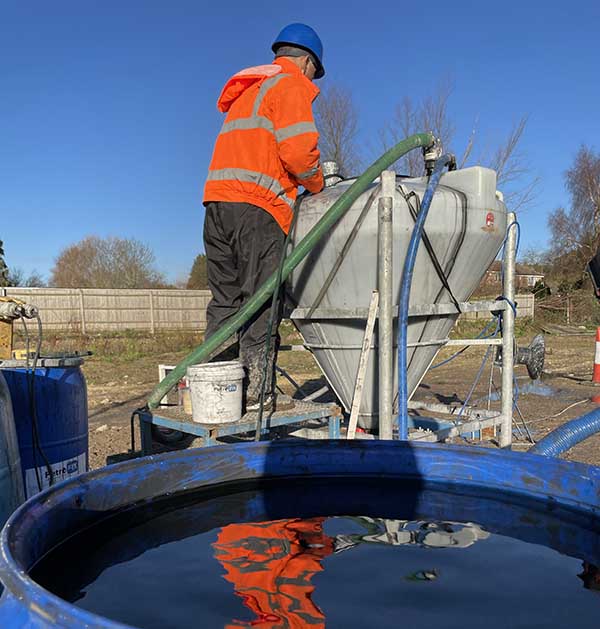
PetroFix Remediation under an Operational Petrol Filling Station
Injectable permeable reactive barrier prevents offsite risk
Fuel losses at an operational petrol filling station (PFS) in the UK resulted in light non-aqueous phase liquid (LNAPL) seasonally building up under the forecourt. High levels of dissolved phase contamination was shown to be migrating beyond the site boundary and providing a potential off-site liability.
It was decided that voluntary remediation should be completed to prevent offsite advection and SLR Consulting concluded that the most sustainable remedial design for the site would be the installation of an injectable permeable reactive barrier (IPRB) using PetroFix® colloidal activated carbon. SLR partnered with REGENESIS to design and apply the solution.
2m 27s reading time
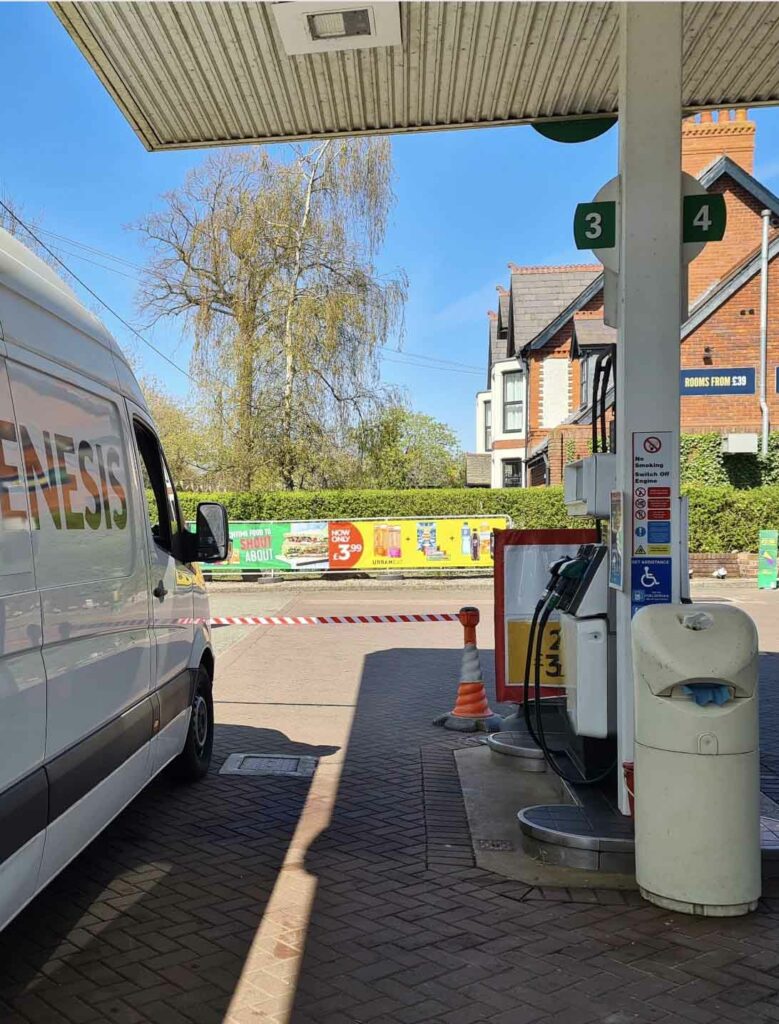
PetroFix achieves rapid and sustained MTBE reductions below target levels
This case study reviews a successful PetroFix application that placed a Washington underground storage tank (UST) site on track for closure, while saving more than €900,000 in comparison to alternate approaches considered at the site.
The site is a former service station and bulk petroleum plant, where petroleum hydrocarbons were discovered leaking from USTs in the late 1990s. WCEC, an environmental consulting company highly experienced in addressing petroleum-contaminated sites, investigated the site and observed light non-aqueous phase liquids (LNAPL or free product). In response, WCEC completed interim remedial measures, including excavating grossly impacted soils and installing a free product recovery system… Download the case study to learn how a successfull application of PetroFix got the site on track for closure.
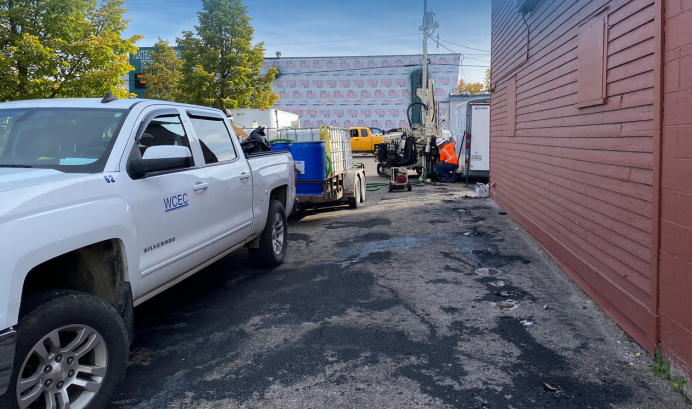
Case study highlights:
- PetroFix achieved rapid and sustained MTBE reductions below cleanup objectives
- At only 8% of the cost of a ‘monitoring-only’ approach, PetroFix saved approximately €1 million for this project
4m 38s reading time
PetroFix Project Experience in Europe and the UK
This document provides an overview of our Petrofix® project experience across Europe and the UK.
PetroFix offers a cost-effective, in situ treatment for petroleum hydrocarbon contamination. It has been used at more than 600 sites to date, across 15 countries worldwide. Applications listed include different project types, such as petrol filling stations, rail depots, active industrial manufacturing facilities, brownfield and oil spill sites, in varying geologies and contaminant concentrations.
2m 48s reading time
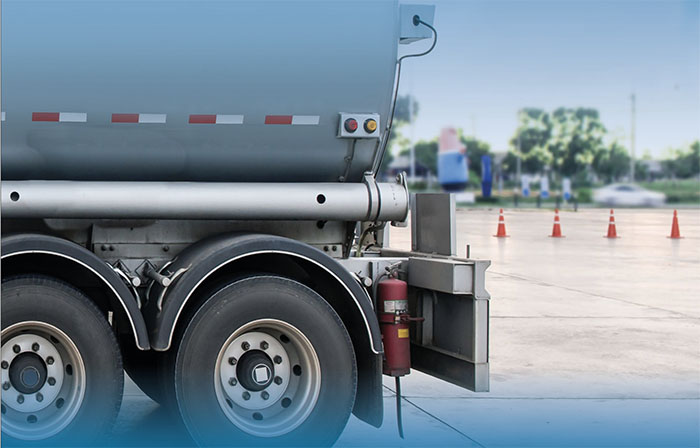
Proven, Rapid, and Cost-Effective Petroleum Spill Treatment
The case studies included in this multi-site review include sites where one of Canada’s largest and most experienced environmental remediation services companies InSitu Remediation Services Ltd. (IRSL) effectively used PetroFix in achieving site closures across Canada. IRSL relies on the technology as an effective, low-cost, and more sustainable remedial solution. As one of the first to apply PetroFix in the field, IRSL has deployed the PetroFix technology to remediate a large number of TPH-contaminated properties, with land use ranging from gasoline stations and commercial properties to residential homes and a national park lodge. PetroFix has quickly eliminated TPH impacts in groundwater at these sites and prevented contaminant movement away from impacted properties, thus eliminating potential human exposure to TPH and protecting pristine, ecologically sensitive surface waters.
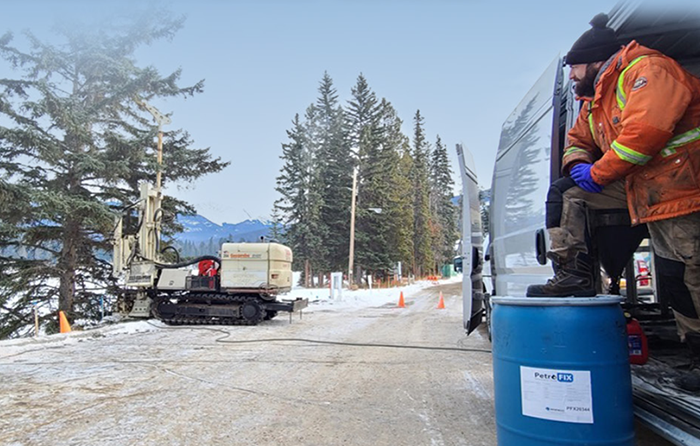
Case study highlights:
- Nine sites IRSL treated with PetroFix have already achieved closure, most within one year after a single injection event
- PetroFix chosen at UNESCO World Heritage site due to sensitivity of a pristine water body at the site, offering a less disruptive approach to address TPH
- Site remedies have led to significant cost savings for IRSL’s clients and demonstrated PetroFix as a viable means for treating TPH-contaminated sites in Canada

 Americas
Americas Europe
Europe Français
Français Deutsch
Deutsch Italiano
Italiano Español
Español
